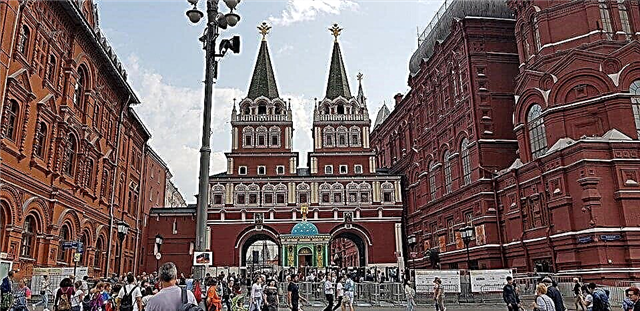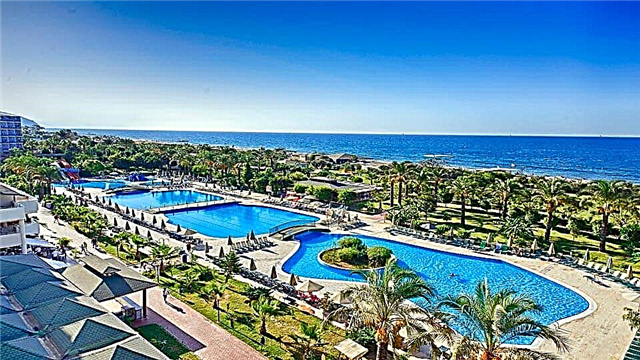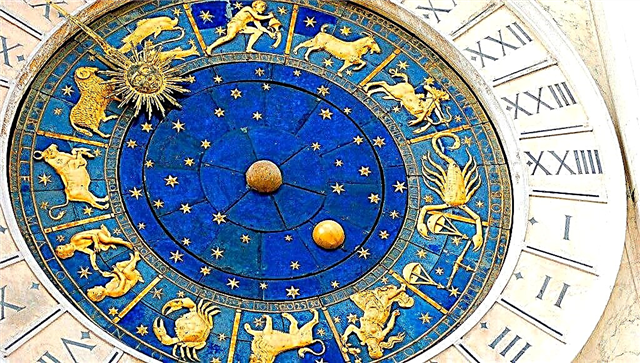In the lagoon of the Adriatic Sea, on the numerous and scattered islands, the Veneti tribes, who previously lived in the northern regions of Italy, settled. Talented people connected the marshland with bridges, crossings and united the fragmented territory into an integral single settlement. This is how Venice was founded. For a full-fledged existence in the area surrounded by water, the Venetians had to become first-class navigators and merchants. Success in commercial activities has allowed the authorities of Venice to invest substantial funds in the improvement and architecture of the city. Narrow avenues of streets, palaces, cathedrals overlooking the Grand Canal reflect the legendary history that survived the rise and fall of the state.
San Marco - the main square of Venice
Venice consists of six districts, the main of which is Piazza San Marco. This is the only place in the city with a large and spacious area, which is considered a rarity for this area. Here are the main attractions that personify the symbol of power, power, economic prosperity and independence of Venice of past eras. Trade ties with the East guaranteed stability and wealth to the Venetians. Local residents could afford to erect unique architectural buildings and structures in the very heart of the city.

Piazza San Marco is the most popular tourist destination. This is where you should start your acquaintance with the history of Venice. The piazza is shaped like a trapezoid, the sides of which are framed by majestic palaces. It is literally an open-air museum, where masterpieces of Byzantine and Gothic architecture are located.
The main entrance to San Marco with two tall granite columns is located near the lagoon. One column is crowned with a statue of Saint Theodore slaying a dragon, and the other is headed by a winged lion. Between them in the 13th century, a platform was often erected for the execution of death sentences. Many superstitious Venetians still do not recommend walking between the columns.
History of St. Mark's Square
For the Venetians, religious values are sacred. A deeply religious people needed a spiritual mentor. There is a belief that Saint Mark preached Christianity in Aquileia (the northern region of Italy), therefore he was considered highly revered among the Venetians. The apostle founded the first church in pagan Egypt, where he died. In the 9th century, merchants from Venice arrived in Alexandria. They were amazed at the outrage of the local Muslim population in relation to the Christian temple. Therefore, the merchants decided to steal the relics of the apostle and bring them to Venice.
The main square of Venice was formed not far from the seat of the government. At that time it was a castle with defensive fortifications. The Doge ordered to build a small basilica next to his palace, where the relics of St. Mark were placed. This laid the foundation for the city's luxurious quarter. According to the traditions of the Middle Ages, the city, claiming to be the first, was supposed to amaze its contemporaries with rich and pompous buildings. In the 12th century, the Doge's palace and temple were significantly expanded and rebuilt. This was facilitated by the economic rise of the Venetian Republic, which became a monopoly in Europe on the silk and spice trade of the East.
1202 marks a turning point in the history of Venice. A detachment of knights who had gathered in a crusade against Egypt stayed in the city. The then Doge Enrico Dandolo had the opportunity to use the valiant warriors for the sake of the state interests of the republic. A treaty was concluded according to which Venice provides the crusaders with a military fleet. In response, the knights must storm and plunder Constantinople, which ultimately happened. Valuable works of art, sculptures, marble taken out of the richest city of Byzantium, become adornments of the premises of the Cathedral of San Marco and the entire square. In 1264, the piazza was tiled with decorative tiles.
From the 14th to the 16th centuries, a new Doge's Palace, a clock tower and a bell tower were erected on the square. Landmarks are decorated with luxurious ornaments, classical painting and graceful sculptures. In 1797, Napoleonic France occupied Venice. The golden interior decorations of the Cathedral of San Marco were taken to Paris, and the valuable decorations were plundered by looters. The Venetian Republic ceased to exist and, decades later, became an Italian province. Since then, St. Mark's Square has become one of the most visited tourist destinations in the world. Artists, writers and other representatives of the creative intelligentsia come here from all over the world for inspiration.
Sightseeing San Marco - what to see?
The modern square is filled with a large flow of tourists. The abundance of pigeons amazes, and the virtuoso performance of musicians from nearby cafes delights. All this takes place against the backdrop of the splendor and grandeur of Piazza San Marco. Here you can see unique architectural objects that delight the guests of Venice.

A striking example of the Byzantine style is the Cathedral of St. Mark. The shrine's marble façade, faced with numerous mosaics and bas-reliefs, is surmounted by five domes with pointed towers. The facade is a series of massive arches with columns. On a large balcony with a balustrade, there are sculptures of four horses. The interior of the cathedral is decorated with gold paintings, frescoes and mosaics. In the main apse stands the famous golden altar, consisting of 250 Byzantine enamels, which are fastened with precious stones.
One of the main attractions of San Marco is considered the seat of the Venetian government of the past centuries - the Doge's Palace. The walls of the facade are lined with marble ornaments and decorated with sculptures. The architectural masterpiece rests on arched colonnades. The second tier of the building is represented by an open loggia, consisting of an openwork arcade. In the upper part, the facade of the palace is decorated with lancet windows. The inner halls of the palace are intended for meetings of senators, masters and other privileged communities. The rooms are decorated with frescoes, framed by gold frames. Here you can see luxurious paintings and sculptures by famous Venetian artists.

The bell tower stands out as a special building in Piazza San Marco. The red brick structure served as a watchtower and beacon for ships entering the Venice lagoon. The tower is equipped with a fast elevator that will take tourists to the observation deck. From there, a magnificent panorama of the entire city and the lagoon opens up. There are five bells installed in the belfry, each with its own purpose. The bell tower is crowned with a Gothic spire with a weather vane in the shape of a golden angel.
An elegant pavilion - Lodgetta, where the guard of the Doge's Palace was previously located, is attached to the foot of the bell tower. The marble building is decorated with bas-reliefs and three arches framed by columns. The base and roof of the building are bordered by a balustrade.

To the left of the Cathedral of St. Mark rises the clock tower, built in the style of the Renaissance. On the roof of the building, you can see two three-meter figures. The sculptural composition represents a bearded old man and a young man. They beat the bronze bell with their hammers. This scene symbolizes the past and the future. Below is the coat of arms of Venice - a lion with an open book. In the central part of the tower there is an oval ledge, on which the figure of the Virgin and Child made of copper is installed.
The main value of this attraction is the clock. The chronometer is considered the most sophisticated astronomical instrument in the world. The large blue dial with a globe in the middle has been in working order for over 500 years. The hour disc consists of gilded zodiacal figures instead of numbers. The clock indicates the phases of the moon, the passage of the sun in the signs of the zodiac and the change of seasons. The craftsmen who created this miracle were blinded so that they could no longer repeat such a masterpiece.
On the one hand, the square is surrounded by a complex of three buildings - the old and new Prosecutor's Office. The facades of the buildings are decorated with openwork arches. During the existence of the Venetian Republic, it housed the residence and office premises of the procurators, who are the second persons after the Doge. They were elected once and for life. Today, the ground floor of this building houses famous and ancient restaurants and a museum.
Florian's unique café has been operating continuously since 1720. The interior of the establishment is decorated with mirrors and luxurious gilded ornaments. Visitors can sit comfortably at the tables set in the square. Here tourists enjoy the exquisite taste of coffee prepared according to the special recipes of local baristas. The live music of the orchestra creates an excellent mood. Opposite the Florian cafe is the equally popular Quadri restaurant. Exquisite dishes are served in the luxurious hall to the expensive wine - white truffles, blue lobster and other delicacies.
How to get to Piazza San Marco in Venice
From the train station and from the bus station in Venice, Piazza San Marco can be reached by vaporetto via the Grand Canal. If tourists have a lot of time, then walking to the piazza will leave good memories. Walking through the labyrinths of narrow streets and many small bridges, you can see interesting places and immerse yourself in the atmosphere of Venetian life.











